If you are on Windows 10 computer, entering a password every time you turn on the computer or wake it up might seem unnecessary. Although there’s a high risk involved when disabling passwords, you can go for it if you are the only person using the system or trust the ones using it.
Disabling the startup password on Windows 10 will save you crucial time when turning on the system. The method that we will discuss below is fairly simple and can be executed by anyone. Ensure that you follow the steps as it is since changes would be made to the Registry and any minor lapse could result in serious complications.
Disable Startup Password
To disable the startup password, search for ‘Notepad’ in the ‘Start Menu’ and open the app from the search results.

Next, copy and paste the code mentioned below in a new file in Notepad.
@echo off
goto Start
---------------------------------------------
Enable or disable AutoLogon on machines where
netplwiz no longer works.
9.12.2020 FNL
---------------------------------------------
:Start
set Mode=
set /p Mode=Install or Remove AutoLogon (I/R)
if /i "%Mode%"=="" goto :eof
if /i "%Mode%"=="I" goto Install
if /i "%Mode%"=="R" goto Remove
goto Start
:Install
set /p PW=Password:
if "%PW%"=="" goto :eof
echo Installing AutoLogon for "%UserName%"
echo> "%temp%\AutoLogon.reg" Windows Registry Editor Version 5.00
echo.>>"%temp%\AutoLogon.reg"
echo>> "%temp%\AutoLogon.reg" [HKEY_LOCAL_MACHINE\SOFTWARE\Microsoft\Windows NT\CurrentVersion\Winlogon]
echo>> "%temp%\AutoLogon.reg" "DefaultUserName"="%UserName%"
echo>> "%temp%\AutoLogon.reg" "DefaultPassword"="%PW%"
echo>> "%temp%\AutoLogon.reg" "AutoAdminLogon"="1"
"%temp%\AutoLogon.reg"
goto :eof
:Remove
echo Removing AutoLogon
echo> "%temp%\AutoLogon.reg" Windows Registry Editor Version 5.00
echo.>>"%temp%\AutoLogon.reg"
echo>> "%temp%\AutoLogon.reg" [HKEY_LOCAL_MACHINE\SOFTWARE\Microsoft\Windows NT\CurrentVersion\Winlogon]
echo>> "%temp%\AutoLogon.reg" "DefaultUserName"=-
echo>> "%temp%\AutoLogon.reg" "DefaultPassword"=-
echo>> "%temp%\AutoLogon.reg" "AutoAdminLogon"="0"
"%temp%\AutoLogon.reg"After pasting the code, click on ‘File’ menu at the top-left and select ‘Save’ from the drop-down menu.
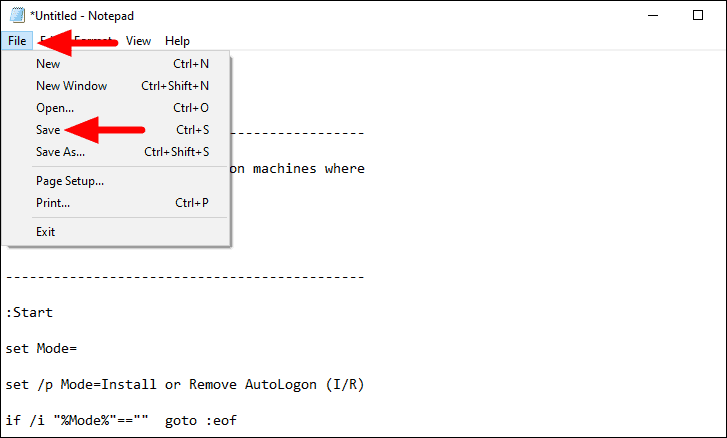
Now enter the file name as ‘AutoLogon.bat’ where ‘.bat’ is the file extension for ‘Batch’ files and click on ‘Save’ at the bottom.
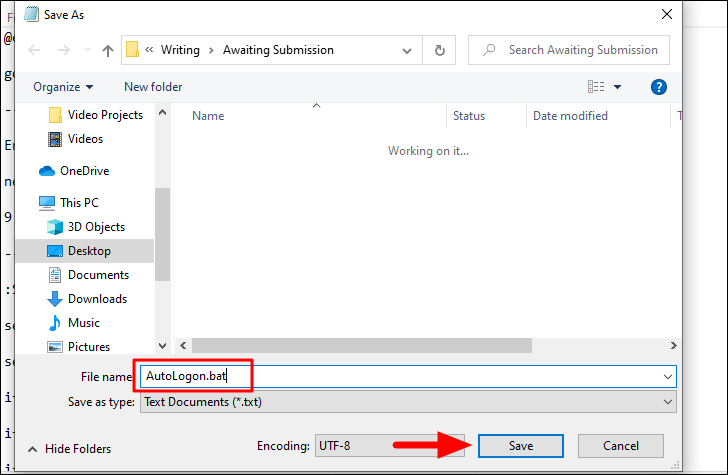
Now, launch the file that you created earlier by double-clicking on it.
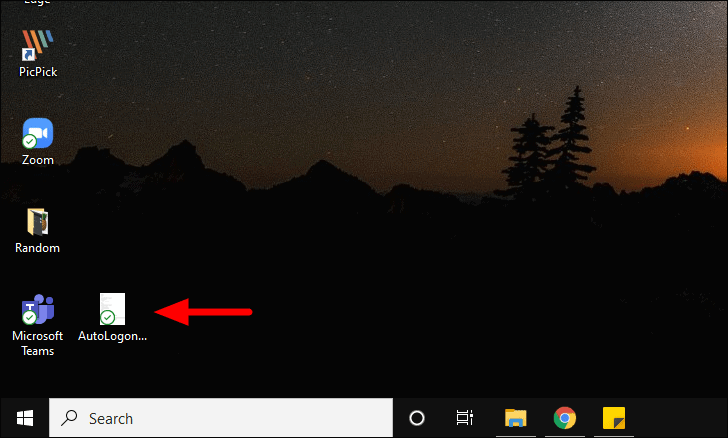
The ‘Command Prompt’ will launch and show a Install or Remove Autologon (I/R) prompt on the screen. Type I and then press ENTER. You will now be asked to enter the password for your system. Type the password and again press ENTER. Click ‘Yes’ on the prompt that pops up.
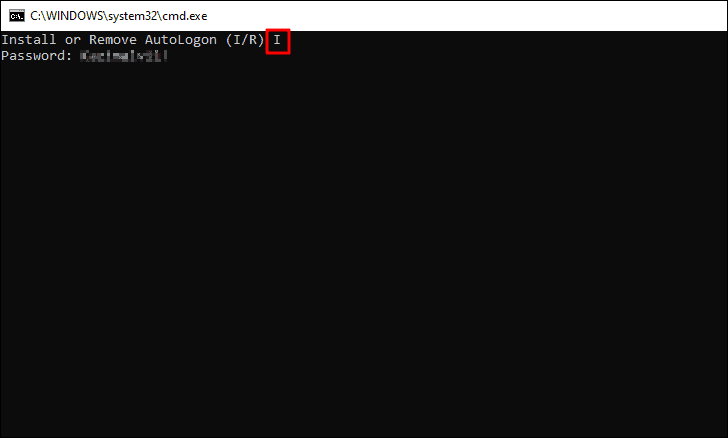
You will now receive a warning box from the ‘Registry Editor’. Click on ‘Yes’ to proceed.

Once the changes are in effect and the startup password is disabled, you will receive a prompt saying that the values contained in the file have been added to the ‘Registry’. Click on ‘OK’ to close the prompt and the command prompt window will close automatically.
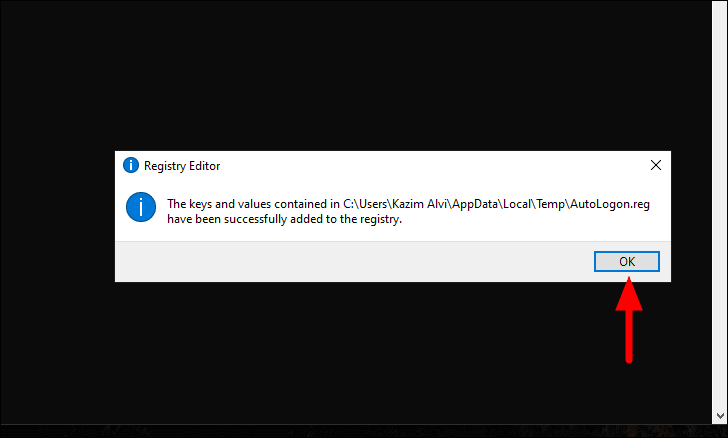
Re-enable Startup Password
In case, you ever want to reenable the startup password, the process is even quicker. Launch the bat file we created in the steps above, type R when prompted, and press ENTER.

You wouldn’t be asked to enter the system password when removing ‘AutoLogon’. The same prompts will be displayed as earlier and once done the startup password will be re-enabled.
Now, you wouldn’t have to enter the password each time you turn on or wake the computer. However, this should be your last approach as Windows 10 offer some amazing and quick sign-in options on startup that you can go for.










Member discussion